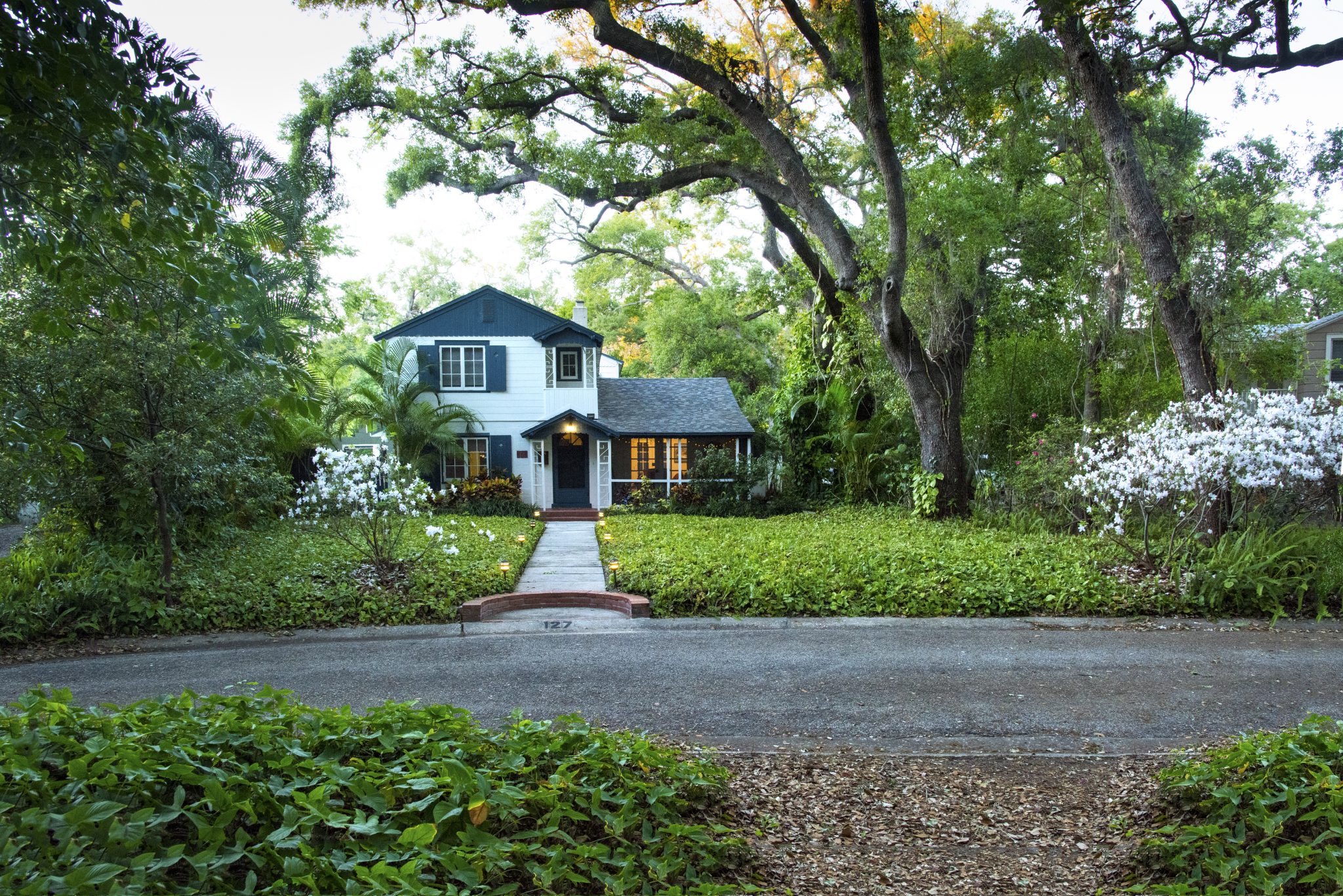Landscaping

Welcome to Alabama, where there are trees aplenty. In fact, there are so many trees that people often pay little attention to them. However, when there is a hurricane, trees move to the top of people’s list of things to notice. It’s especially easy to notice the ones lying on the ground or sticking out of a roof–causing expensive cleanup and repair efforts–or the ones that snapped power lines, causing everyone to sweat to death in the post-storm heat.
If a homeowner’s first reaction to trees and hurricanes is “They survived Katrina, they’ll survive another hurricane,” understand that the trees that withstood Katrina are not the trees in the backyard right now. Those trees took damage from Katrina and other weather events since then. They have also taken damage from animals, insects, decay, disease, and–most importantly–from humans, the most serious pest of all. As any landscape tree ages, it accumulates new issues and problems. The tree that withstood Category 5 winds years ago, is not the same tree now.
Check Your Trees
Homeowners need to check their trees. They have a duty of care, particularly in relation to trees that may cause damage to a neighbor’s property. This damage is not limited to just during storm, but anytime. As residential tree owner and a non-arborist, the duty of care isn’t too demanding. People simply need to make a genuine effort to be sure their trees aren’t going to be an obvious danger to themselves or others. Even if people don’t know much about trees, it isn’t difficult to get an idea of what might go wrong in a storm. To get started below are a few items to check.
- Roots, particularly the root crown. The root crown is the flare at the base of the tree where the main roots dive into the soil. The root crown and the fat, strong roots coming out of it are what the tree stands on. All of the tree’s branches and leaves, in their serious tonnage, are being held to the Earth by these roots. These roots are what the tree pushes and pulls on in the wind. If that root crown or the big roots are damaged or decaying, get an arborist to examine the tree.
- Trunks. Homeowners should check the tree’s trunk, especially the middle point of the trunk between the root crown and where the main branches begin. This is where the most stress will be placed on the trunk in high winds. Decay, cavities, or structural flaws in that middle area are important to keep track of. The tree will do its best to compensate for the problem, but it is important to be certain the problem isn’t too big, causing the trunk to snap in high winds.
- Branches. Pay attention to all branches, particularly dead branches, excessively long branches, and branches that attach to the tree at tight angles. Dead branches, particularly ones that are in excess of 1 inch in diameter, are just missiles waiting to happen in a hurricane. Have them properly pruned out.
- Over extension. This means the branch has grown so far out and has so little side branching or diameter that it is likely break in high winds. Tree branches grow to help dissipate the pressure put on them by wind. Long, slender branches with few side branches are more likely to crack or break in the wind. Over extended branches are often created by pruning. Excessively raising tree canopies or clearing out all the interior branches can create a similar problem. When buying tree work, understand that pruning of large trees is a skill that is equal parts science and art. It shouldn’t be done by just anyone. Try to hire experienced, International Society of Arboriculture (ISA) certified arborists.
- Angles of attachment. How a branch attaches to the trunk is important. Sharp, tight angles are a structural problem for trees. Because the branch bark and trunk bark are pressed to each other inside the angle, there is often too little wood connecting the two. That bark in between doesn’t go away, it’s embedded in there. As that branch and trunk grow, the amount of embedded bark increases, and the union becomes weaker.
More Information
The above are only a few major, easy-to-see reasons why trees might fail in storm winds. If there are problems that you deem concerning, have a tree risk assessment done by a qualified arborist. Locating a qualified arborist is simple. Visit www.treesaregood.com and search for one nearby. If you are looking for a tree risk assessment, the qualification will be listed as one of their credentials.
Pro tip. When selecting Alabama as your state to search, search by zip code and not by city.
Tree care before a hurricane does increase tree survival and reduces damage from storms. If you find something concerning, call your local Extension office or an ISA certified arborist.
For more information, contact William “Jack” Rowe, regional Extension agent.

